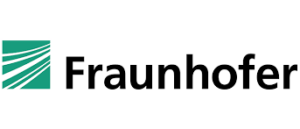R2D2, a joint project to analyze and development high-TRL processes and technologies for manufacture of flexible organic light-emitting diodes (OLEDs) funded by the German Federal Ministry of Education and Research (BMBF) has been successfully completed.
In contrast to point light sources like LEDs made of inorganic semiconductor crystals, organic light-emitting diodes (OLEDs) are light-emitting surfaces. Their light attains a new level of homogeneity and can be dimmed smoothly. The light does not throw harsh shadows and requires no reflectors, light pipes, or similar optics. This makes OLED light sources efficient and light-weight, and they require no supplemental cooling. OLEDs can be applied to flexible and bendable substrates and arbitrarily shaped, so they establish an entirely new world of design.
The previous high fabrication costs for OLED lighting modules needed to be reduced for the technology to be reasonably priced and easily employed for manufacturing marketable products. In the project, that is now concluded the processes and market sectors were thoroughly analyzed, the potential for improvement was identified and realized. A series of OLED lighting applications were developed that combine special design features of delicacy and flexibility with efficient fabrication techniques.
The tail light displayed at CES 2016 in January was developed as part of the project in cooperation with AUDI AG, OSRAM OLED and HELLA. It was fabricated as a complete 3D OLED module from just a single flexible OLED formed by bending it around various axes into a three-dimensional unit. AUDI AG took over specification and control of the segmented OLED and developed the interface technology, which was realized by OSRAM OLED and assembled by HELLA to fit a mounting socket design in the tail-light assembly. Two of these modules were integrated into each tail light; the emission color and brightness correspond to the ECE standard. The light emitting 3D unit requires no additional optics or reflectors whatsoever to be seen easily from all viewing angles. The OLED in 3D-design increases safety and offers new potential for automotive design, and for development of lighting designs with particular homogeneity of the luminous surfaces and precision construction.
Fraunhofer FEP was able to demonstrate through this project for the first time that ultra-thin flexible glass is able to be coated and processed roll-to-roll. Specific OLED components were developed using this technique for design studies such as “Glowfood” in cooperation with OSRAM OLED and the Finnish lighting manufacturer Tunto Design, for example. This design, as well as an additional one, was created by taliaYstudio in Vienna under contract from OSRAM.
Dr. Christian May, Project Coordinator and Division Director “Flexible Organic Electronics” at Fraunhofer FEP, summarizes: “The R2D2 project funded by BMBF has brought OLED technology in Germany a good deal further. Flexible OLEDs in innovative lighting solutions will be coming onto the market in the near future. Other sectors will follow suit. There are already prospective designs for household appliances and even for aircraft over the long term.”
AUDI AG is offering the glass-based OLED technology in a high-volume production model for the first time as the tail lights for the new AUDI TT RS . This was already presented at CES 2016 in Las Vegas next to the Audi “e-tron quattro” concept with tail lights developed from flexible OLEDs under the R2D2 development project. Progress in OLED technology is happening rapidly. The transition to a production-ready product could only be achieved with the advances of this project.
Novaled, a leading global expert in OLED materials and technologies for high-efficiency, long-life OLEDs, was a member in the consortium. Novaled was able to optimize the OLED layers and charge-carrier transport materials to meet the high demands of the automobile industry. Cost-effective solutions were devised. This included providing materials having stable fabrication processes that can be efficiently employed in mass production, as well as methods that can ascertain the compatibility of new organic materials with manufacturing processes, thereby saving development time.
The consortium also included the VON ARDENNE GmbH which ensures the industrial feasibility of the developed technologies as one of the market leaders for equipment of highly productive roll-to-roll coating of flexible substrates. VON ARDENNE contributes additional expertise to the project with its linear evaporation sources of high yield. The innovative evaporation sources have been developed and brought to market maturity especially for this project. They enable the control of the coating process within a small temperature range. These tight specification limits are necessary for the evaporation of temperature-sensitive materials and thus achieving optimal coating results.

